The Wayfinder Journey: Settling, Visioning, Bridging
Share this article:
In my work as a coach, I find that the most profound insights often emerge through dialogue with clients. Recently, during a feedback session with a Wayfinder programme client, Nick Ponsillo, something remarkable happened: he spontaneously articulated a three-stage model that perfectly captured the journey we had been on together. This co-created framework—Settling, Visioning, Bridging—will now become a cornerstone of how I understand the Wayfinder process: something that was happening intuitively and is now articulated as three key phases.
The Three-Stage Wayfinder Journey
When we feel lost or stuck in life, the path forward isn’t always clear. The Wayfinder programme is designed to help navigate these challenging transitions, but what does this journey actually look like? Through client feedback, a clear three-stage process has emerged:
Stage 1: Settling
The journey begins with establishing solid ground beneath your feet. Many clients come to coaching feeling anxious, lacking confidence, or overwhelmed by circumstances. Before we can explore new possibilities, we need to create stability.
In the Wayfinder programme, this often involves exercises like “capturing a hundred achievements” or “noting ten accomplishments each day.” As one client reflected, these practices “really settled the horses and grounded me into thinking okay, I have done some things, I am capable, I do have something I can offer.”
This settling phase is about acknowledging where you are, recognising your inherent value, and creating the psychological safety needed for exploration. The consistent support provided through our coaching relationship becomes “a settling thing to have alongside all of this so you feel comforted that someone else believes in you and therefore you should believe in yourself a bit more.”
Stage 2: Visioning
Once basic needs are met and anxieties are addressed, we can turn our attention to possibilities. This second phase is about “thinking about what could be and what might be.”
In the Wayfinder programme, this involves challenging limiting beliefs and expanding horizons. Sometimes it’s about planting “a seed or saying something which explodes something I felt was concrete,” helping clients explore “more options than I was thinking about.”
This visioning stage is particularly powerful because it happens in a non-judgmental space. When exploring unconventional paths—whether it’s a career pivot, a lifestyle change, or an unexpected direction—clients value that “there was no judgment on whether that’s a good thing or a bad thing.” This creates room for authentic exploration without ego or external expectations getting in the way.
Stage 3: Bridging
The final stage addresses the practical question: “How do I get to that point?” This is where the “bridges” metaphor becomes particularly relevant to the Wayfinder programme.
This forward-thinking approach helps clients move past setbacks with the mantra, “Oh well, on to the next one.” It reduces the tendency to “wallow in the injustice of things” and instead focuses energy on constructive next steps.
In the Wayfinder programme, bridging involves creating specific action plans, identifying resources, and developing strategies to navigate obstacles. It’s about building tangible connections between your current reality and desired future.
From Crisis Management to Optimisation
Perhaps the most interesting insight from client feedback is how the Wayfinder journey evolves over time. What often begins as “firefighting and emergency stuff” during periods of transition can evolve into a desire for “optimisation”—wanting to “absolutely be the best version of myself and achieve remarkable things.”
This marks a significant transition point in the coaching relationship and suggests that the Wayfinder programme can serve as a foundation for ongoing growth and development. Once clients have found their way through immediate challenges, many discover a desire to continue the journey toward even greater fulfilment and impact.
Conclusion
The Settling-Visioning-Bridging framework offers a powerful lens through which to understand the Wayfinder journey. By honoring each stage of this process—creating stability, exploring possibilities, and building pathways forward—we create the conditions for meaningful transformation.
Are you standing at a crossroads, unsure which way to turn? Or perhaps you know your destination but can’t see the path? The Wayfinder programme might be your compass. If you’re feeling lost or stuck in your current situation, remember that finding your way is a process. It begins with acknowledging where you are, builds through exploring where you might go, and culminates in creating bridges to get there.
Curious about how the Wayfinder programme might support your journey? Book a free “Toe in the Water” call to explore whether this approach might be right for you.
With massive thanks to Nick Ponsillo who was the coaching client I worked with to develop this model. He has agreed to being named, of course.

3 thoughts on “The Wayfinder Journey: Settling, Visioning, Bridging”
What a beautiful analogy, Tass. Thank you for this comment and for sharing such beautiful wisdom 🙏🏻
The beauty of Stuart’s approach is his delight in making small, incremental changes for the better in the life and work of his clients. This is the essence of Zen, “wax on, wax off” and
just keep on keeping on, one step after another, one foot in front of the other, moving toward
a better place, which one might not ever reach, but then again, the journey is the metaphor.
Needless to say, his model crrelates precisely with the best practices in coaching, establishing
trust and then introducing a new view, only to consolidate gains in the end. But it correlates
as well to what Buddhists call the three doors of enlightenment, the purification of the body
(the physical state) the speech (the dynamic expression) and the mind (the absolute state)
as one approaches perfection on the journey to enlightenment. “Approach” is the operative
term, for one never gets to the end, only approximations of the ideal in the real world.